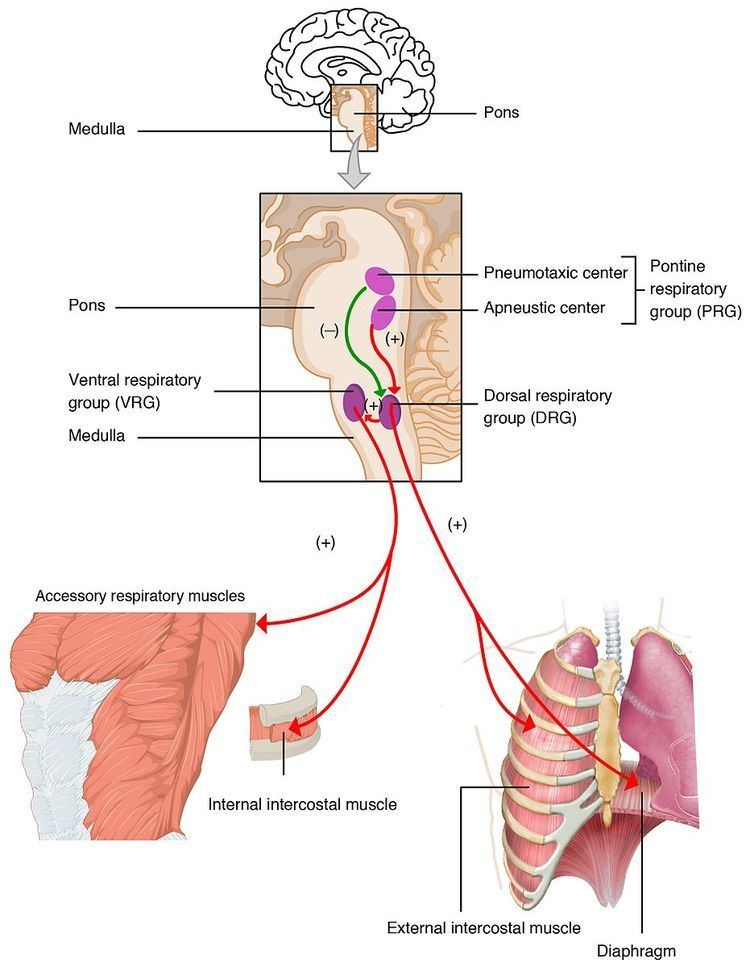 | ||
The respiratory centers (RCs) are located in the medulla oblongata and pons, which are parts of the brainstem. The RCs receive controlling signals of neural, chemical and hormonal nature and control the rate and depth of respiratory movements of the diaphragm and other respiratory muscles. Injury to these centers may lead to central respiratory failure, which requires mechanical ventilation and is usually associated with a poor prognosis.
Contents
- Groups
- Inspiratory center Dorsal respiratory group
- Expiratory center Ventral respiratory group
- Pneumotaxic center
- Apneustic center
- Respiratory center depression
- Respiratory center stimulation
- References
In healthy individuals the presence of elevated carbon dioxide levels in the blood lowers its pH. Chemoreceptors found in carotid bodies and aortic bodies detect a decrease in blood pH and send this information to the RCs which then signal the respiratory muscles to breathe.
Groups
The respiratory centers are divided into four major groups, two in the medulla and two in the pons. The two groups in the medulla are the dorsal respiratory group and the ventral respiratory group. The two groups in the pons are the pneumotaxic center (also known as the pontine respiratory group), and the apneustic center.
Inspiratory center (Dorsal respiratory group)
Expiratory center (Ventral respiratory group)
Pneumotaxic center
Apneustic center
- It discharges stimulatory impulse to the inspiratory center causing inspiration.
- It receives inhibitory impulse from pneumotaxic center and from stretch receptor of lung.
- It discharges inhibitory impulse to expiratory center.
Respiratory center depression
Depression of a respiratory center can be caused by:
Respiratory center stimulation
Amphetamine stimulates the medullary respiratory centers, producing faster and deeper breaths. In a normal person at therapeutic doses, this effect is usually not noticeable, but when respiration is already compromised, it may be evident.
